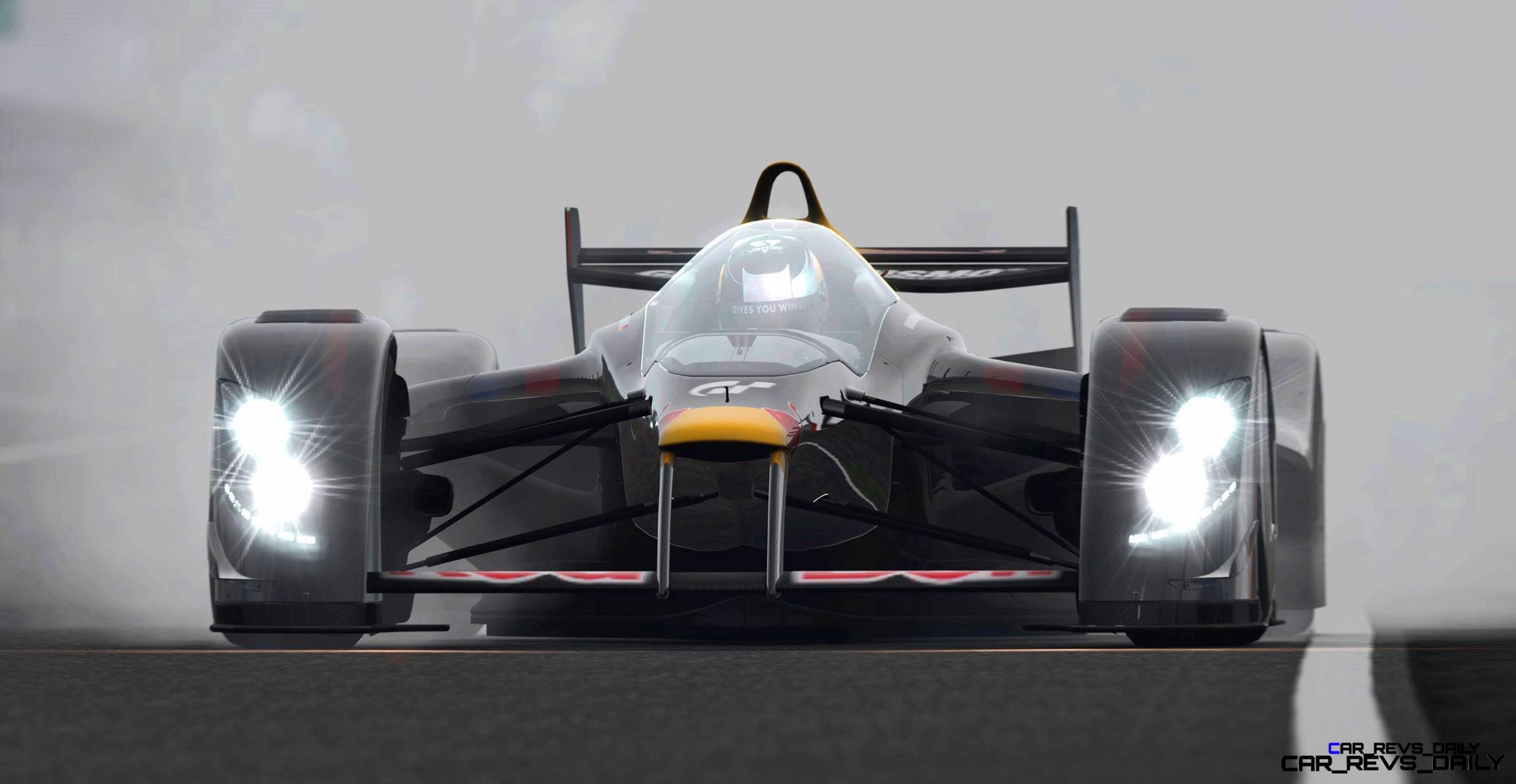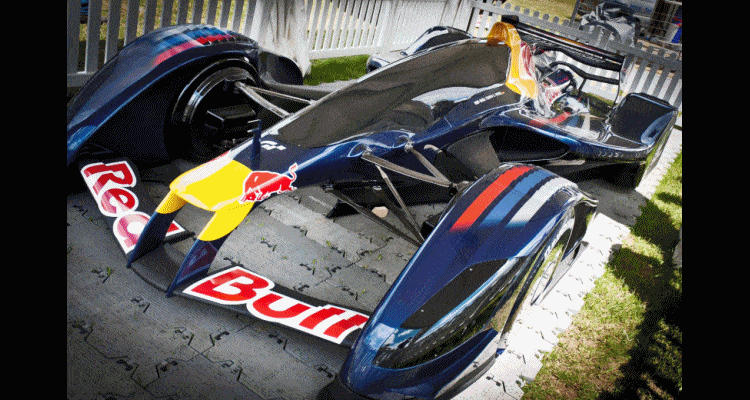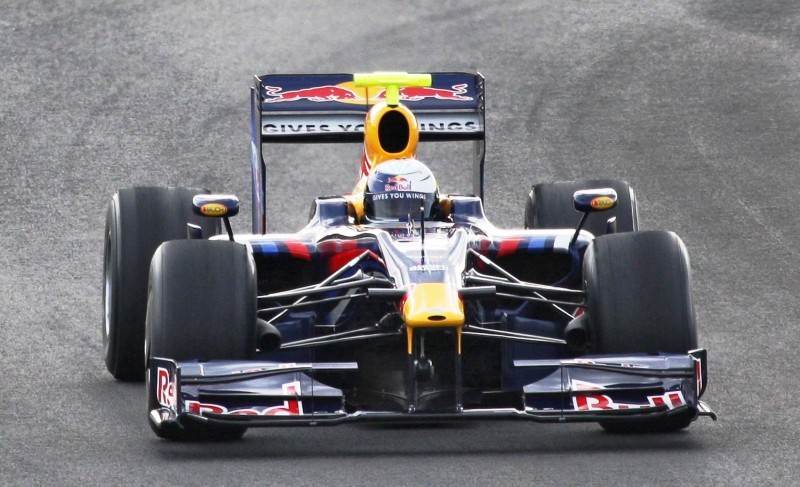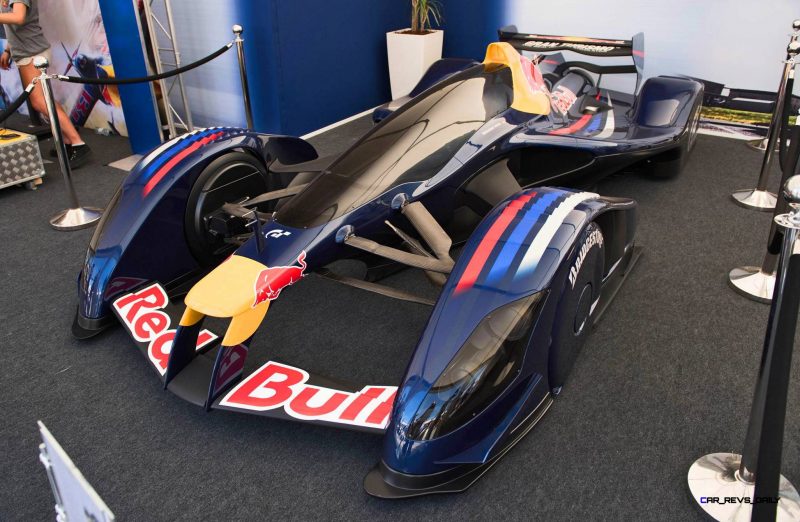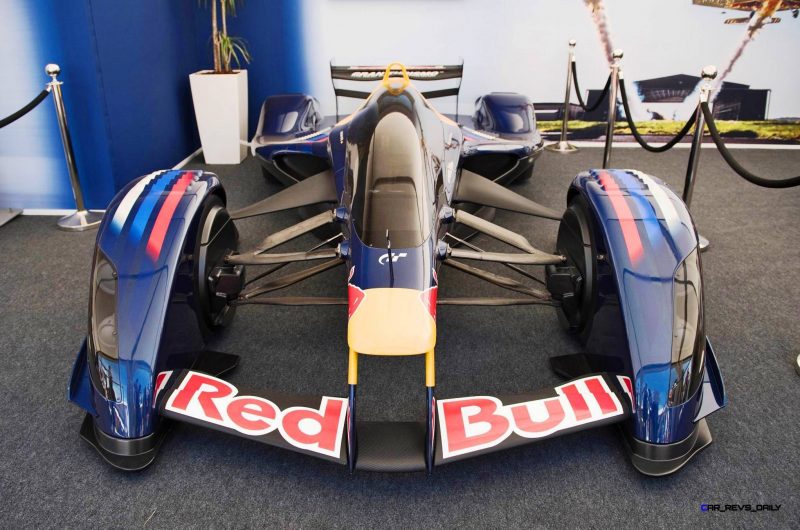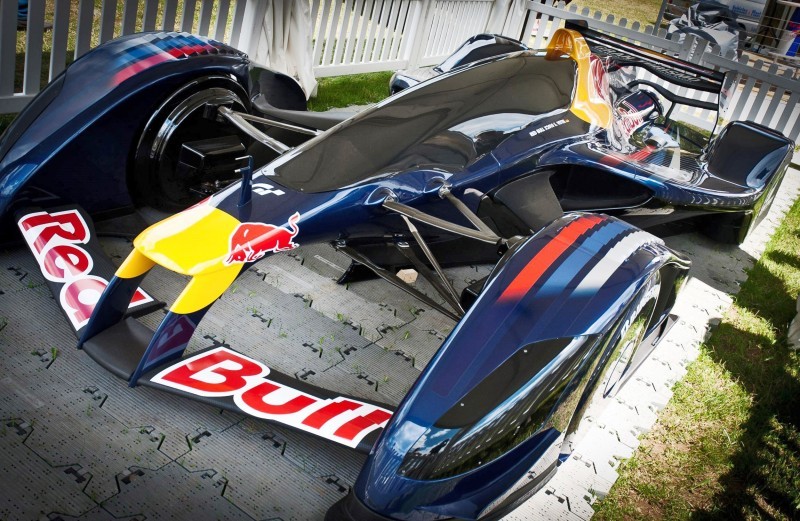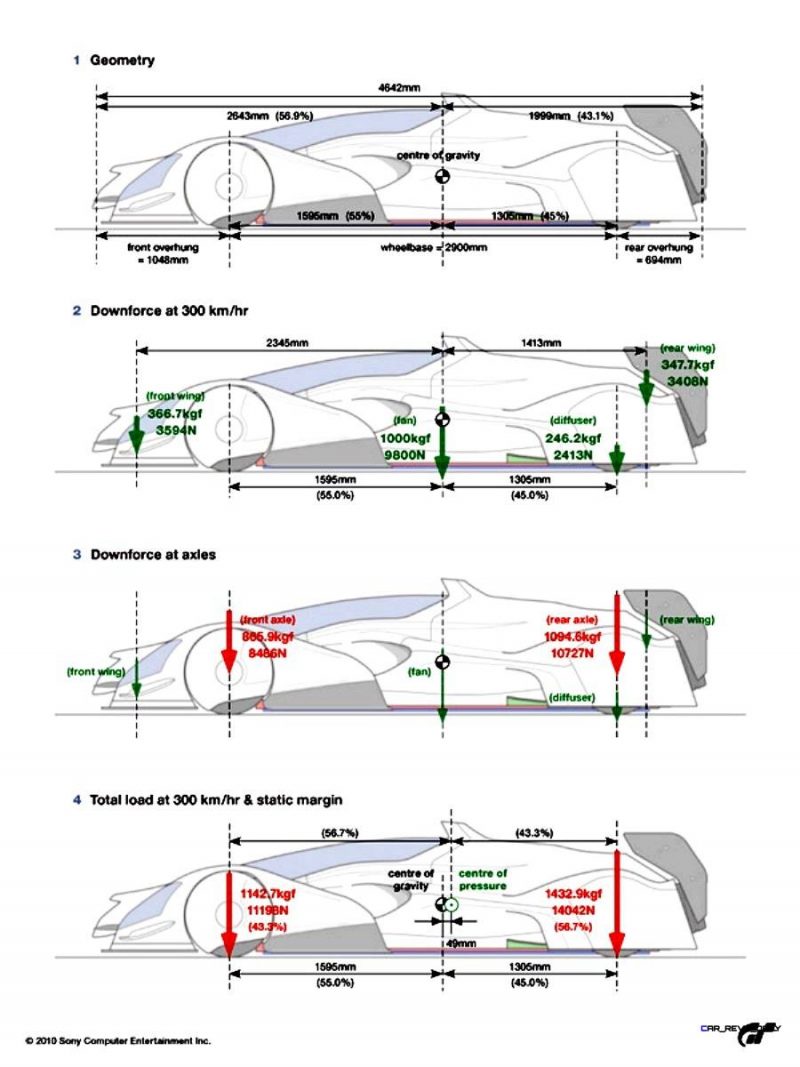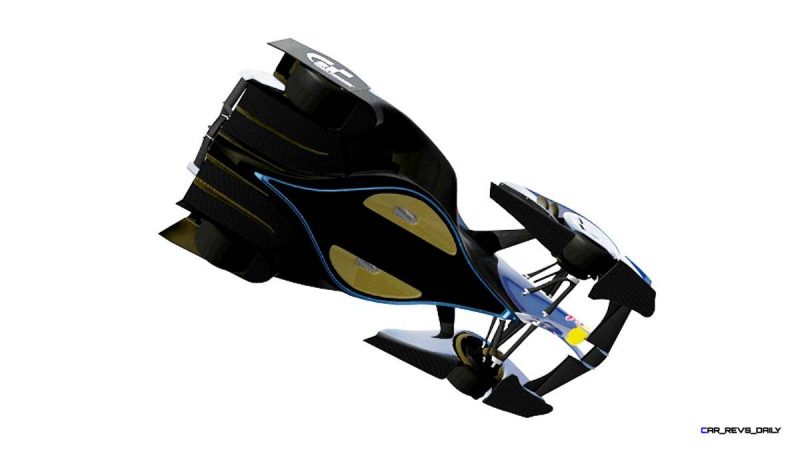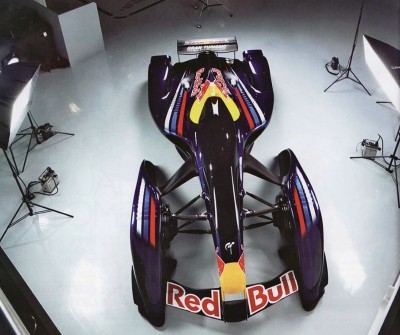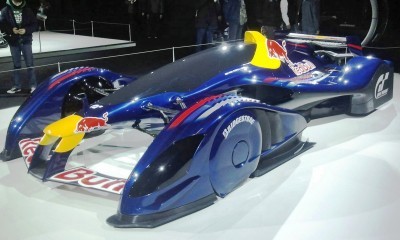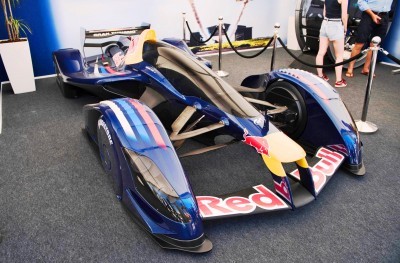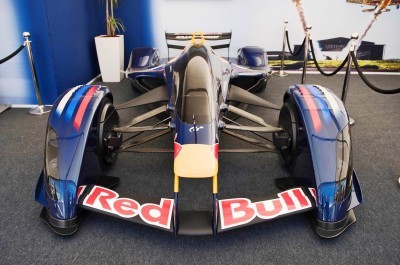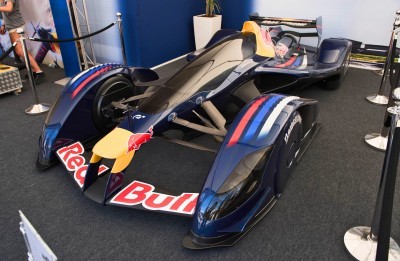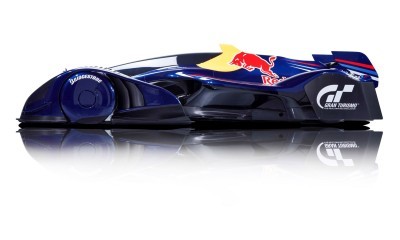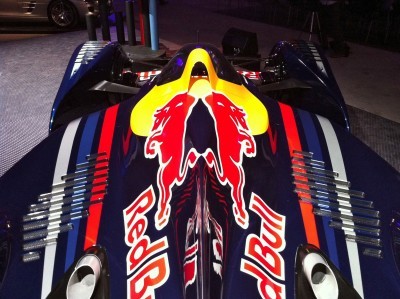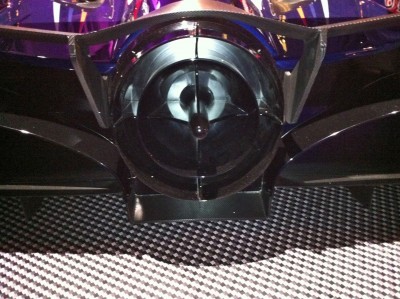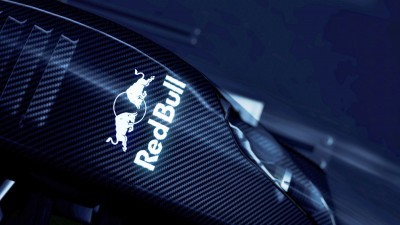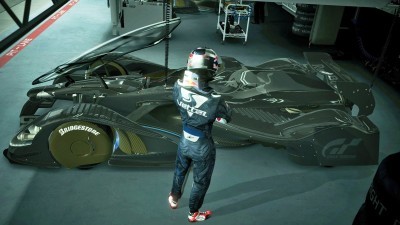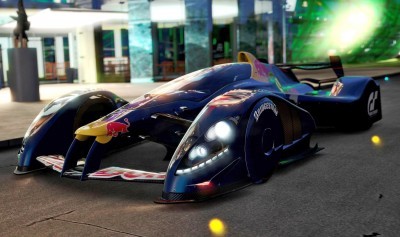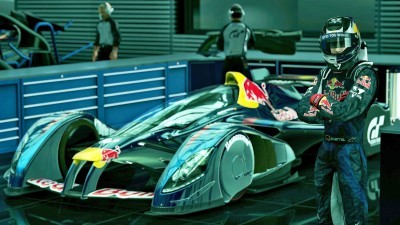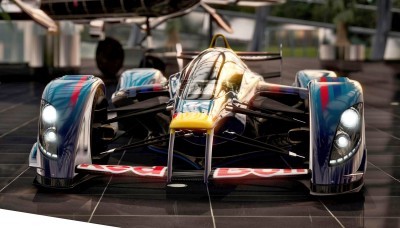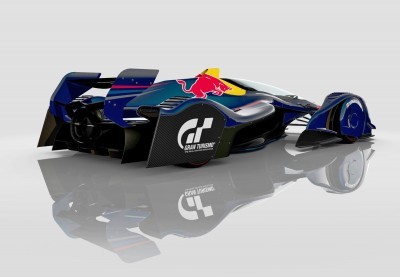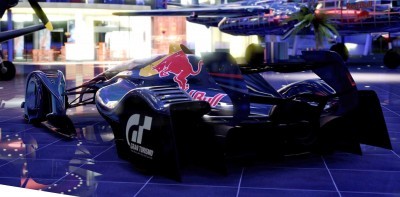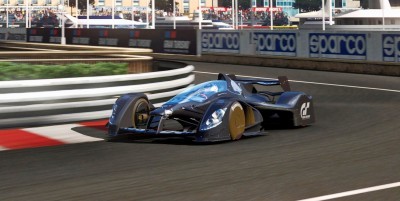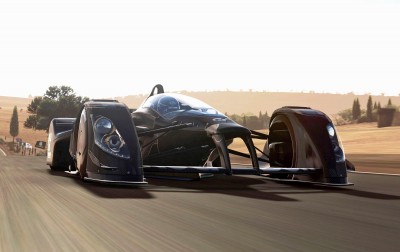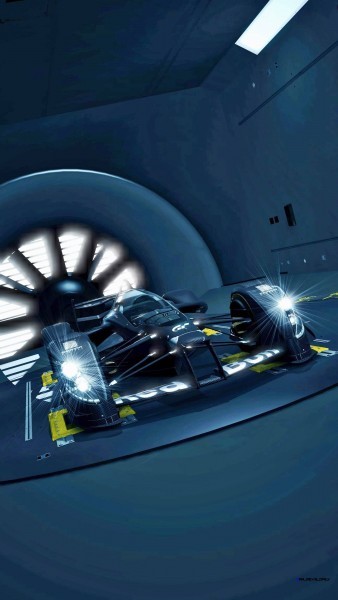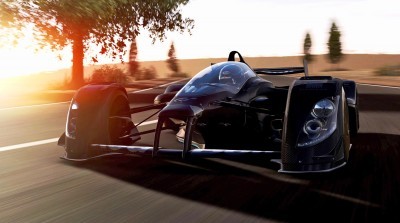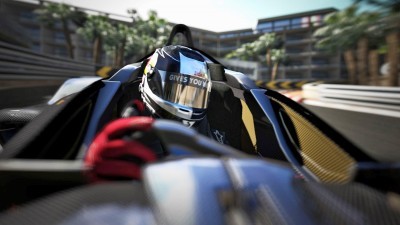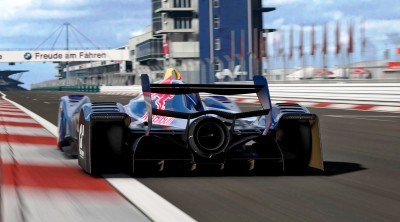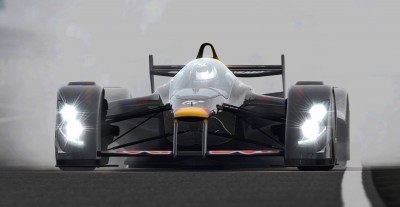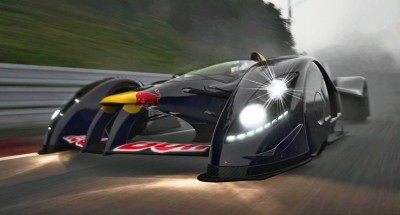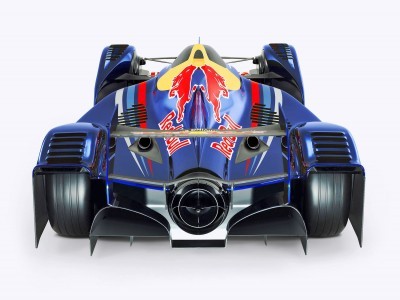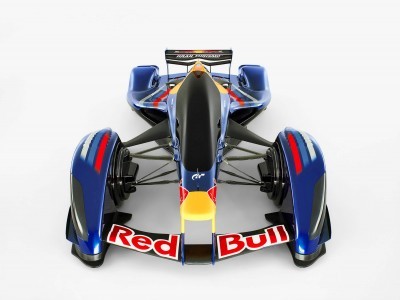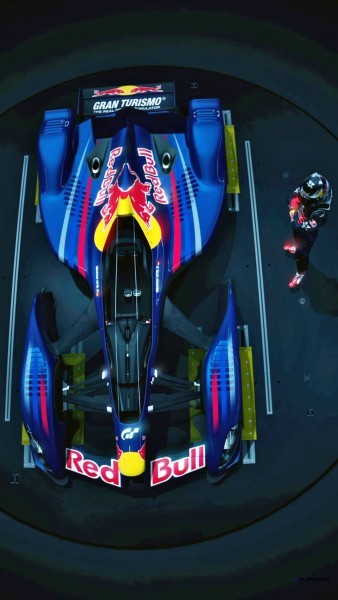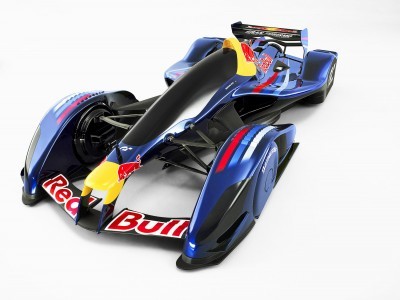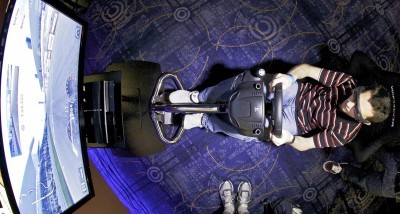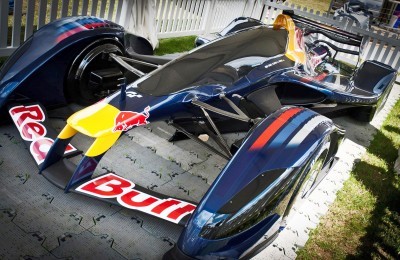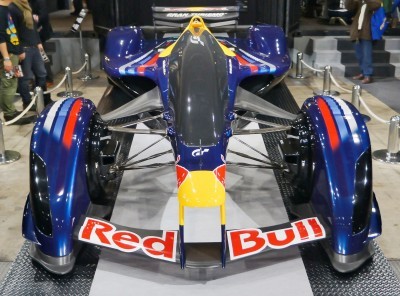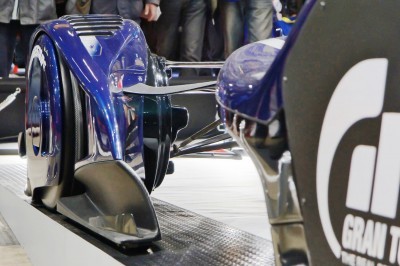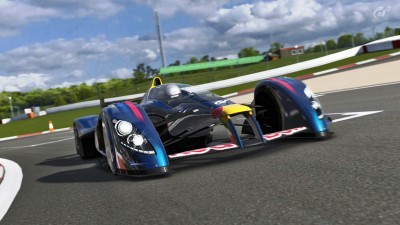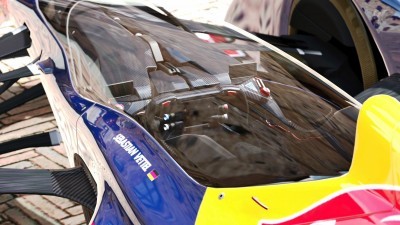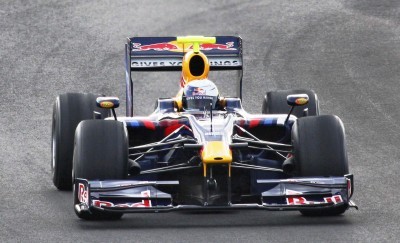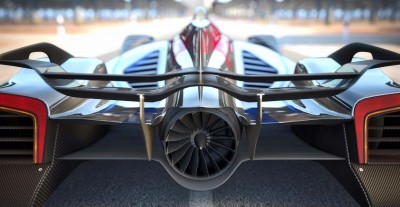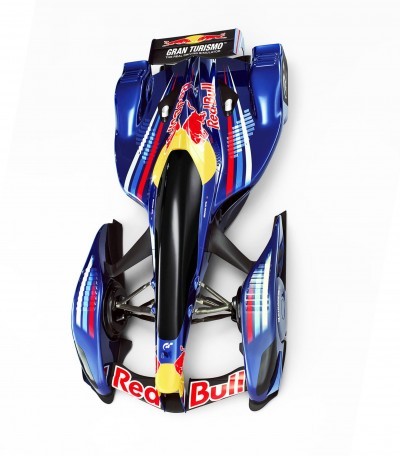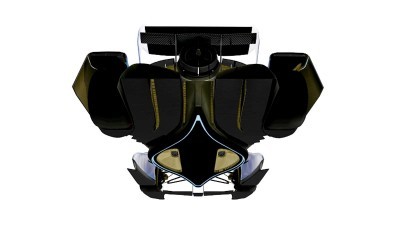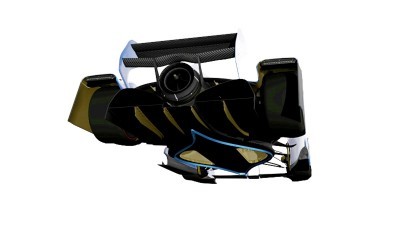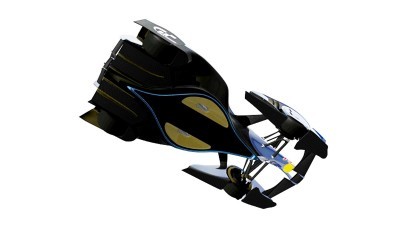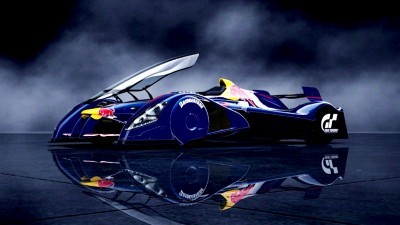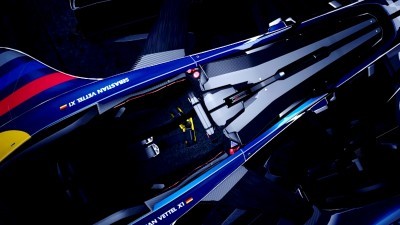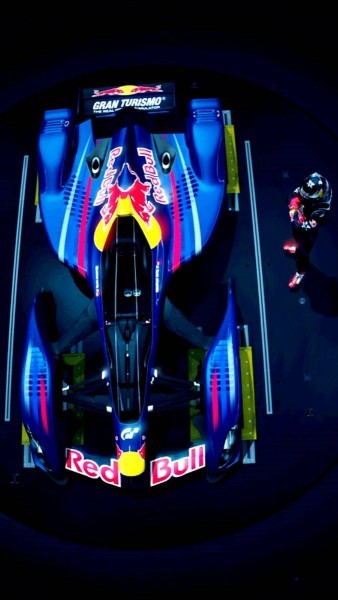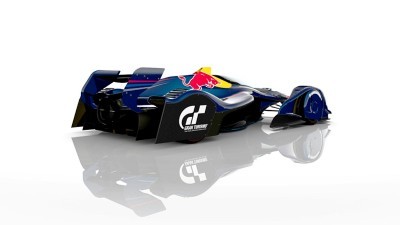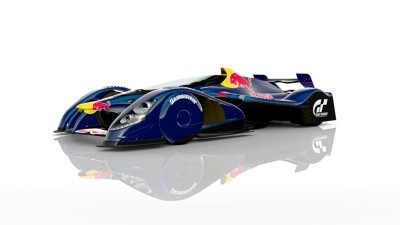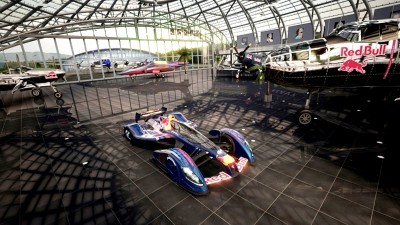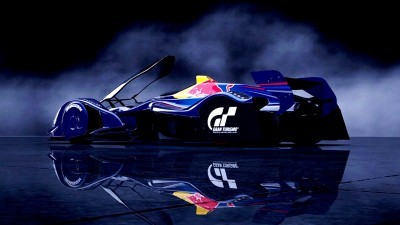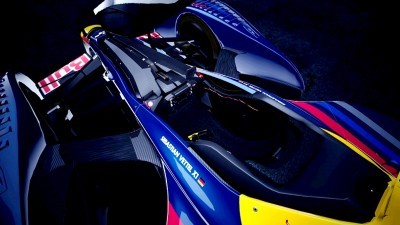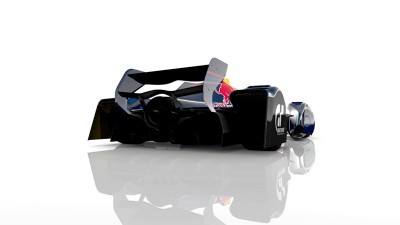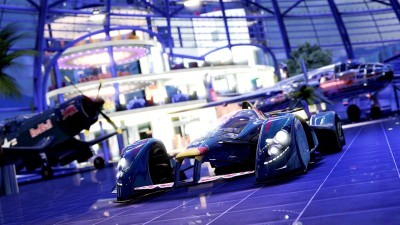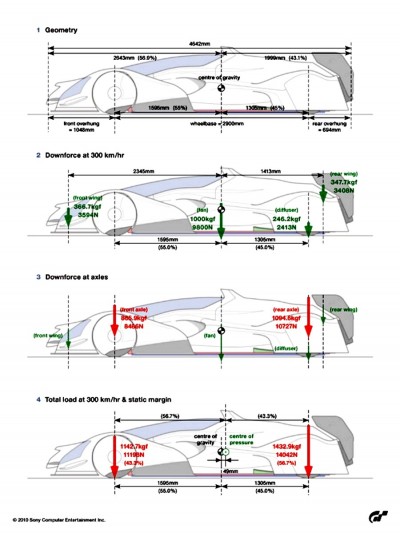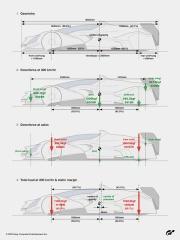 As we look to the future of disruptive, breakthrough innovations in racing — it helps to start with a blank sheet of paper.
As we look to the future of disruptive, breakthrough innovations in racing — it helps to start with a blank sheet of paper.
This is counterintuitive, of course, versus the typical half-step of evolution among all species — racecars included.
What is needed to deliver the TV ratings and championship trophies all race series crave? Speed, beauty, drama and technical innovation.
There must be balance between outright speed, sound and safety.
In short, a revolution is needed to put put racing into hyperdrive.
The world championship Red Bull and Vettel pairing from 2010 provided a clever look at priorities of racing team leads like Adrian Newey. A brilliant aerodynamic engineer, Newey is also tipped for a spot at the top of the Formula One world. He is a favorite of Bernie Ecclestone — which is all you really need to know about F1 succession plans in the future.
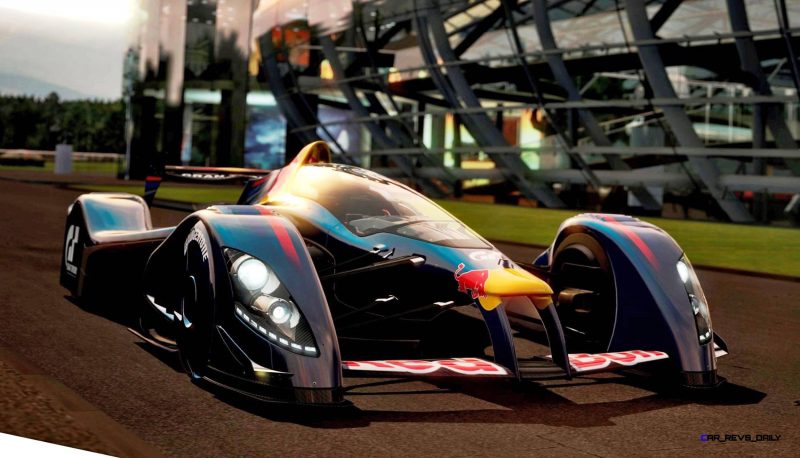
Manufacturer: Gran Turismo
Year: 2010
So, armed with supercomputers and the real-life RB Wind Tunnel in Bedford, England — Newey tore up the existing designs and started fresh.
Balancing CAD-CAM and hydrodynamic studies and models, the wind tunnel data is an exceptional tool of the trade. Molding air to do what he wants, when he wants.
But how to really put these ideas to the test?
Enter, Gran Turismo from Polyphony Digital for Sony PlayStation.


To make each car drive like it does in the real world for gamers, the GT physics engine takes an estimated 80,000 parameters into account. Grip, yaw, power, gears, drag — even wind and rain — results in a fully race-able digital car that behaves like the real thing.
For the Red Bull X1 Concept, Newey grasped the fantastic potential of this racing sim to refine his design to achieve max performance.
In place of a real car with fixed details, here we have the ability to tweak those params —- delivering the 280-mph-plus Vmax of this prototype, plus its dynamic and aero traits.
Nearing 1500-horsepower and featuring a closed cockpit, fan-driven vacuum aero and shrouded wheels — the X1 is a faithful look into the future of racing.
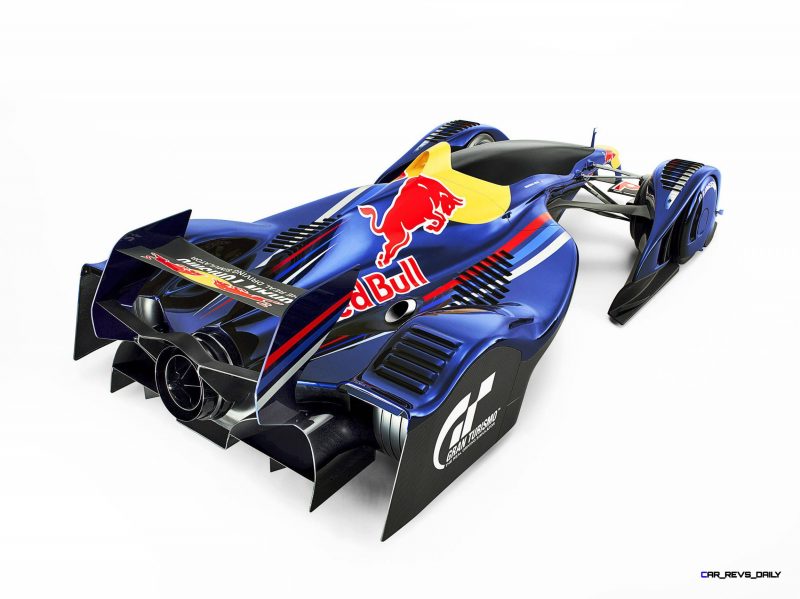
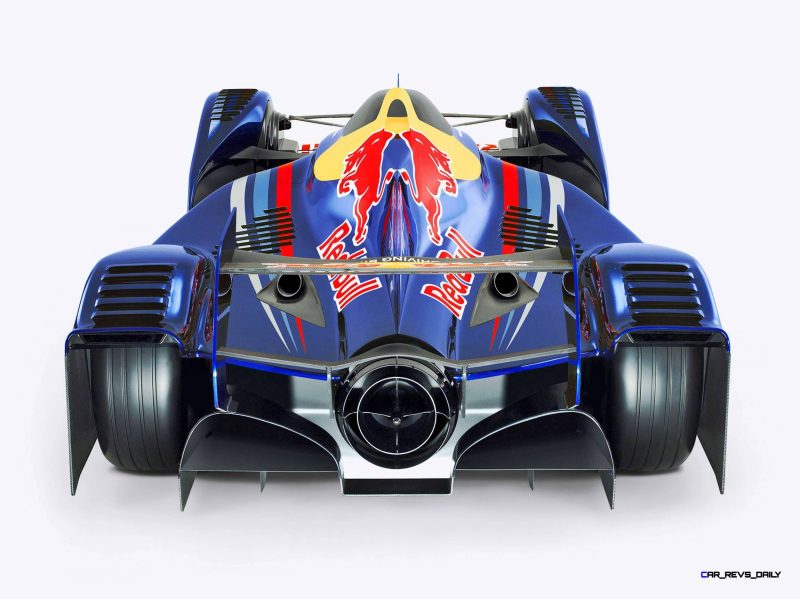
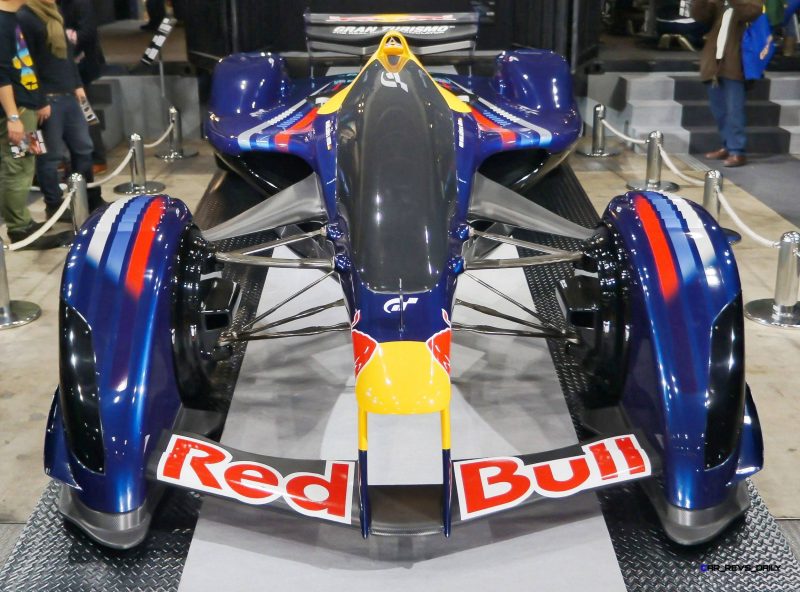
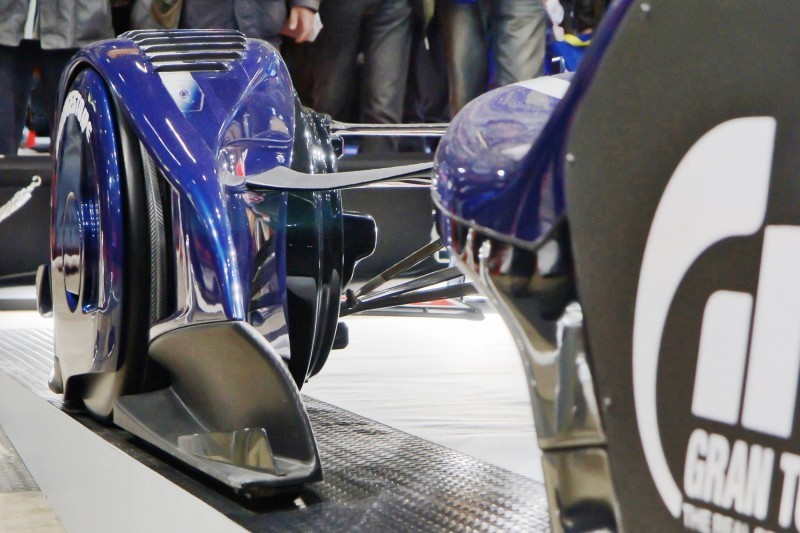
What did the X1 teach race engineers and Newey himself?
Follow-up concept in the X2014 take hundreds of thousands of laps into account. It is like all GT racers did the development work on the car– allowing tweaks with hard data as the basis for the changes.
As Gran Turismo gets more and more advanced, the sim R&D potential could be a powerful tool for all supercars and racers.
Check out the X1 in action below — in a handy side-by-side showing the difference in graphics and sound for GT5 versus GT6.
2010 Red Bull X1
GT5 vs GT6 Comparison – Sound and Graphics
2010 Red Bull X1
TECH SPECS BRIEF
Power: 1483bhp
Torque: 527lb ft
Top speed: 249mph
Weight: 545kg dry, 615kg gross
Height: 980mm
Length: 4750mm
Width: 2180mm
Wheelbase: 2900mm
Engine: 3.0-litre V6 with direct injection
2010 Red Bull X1
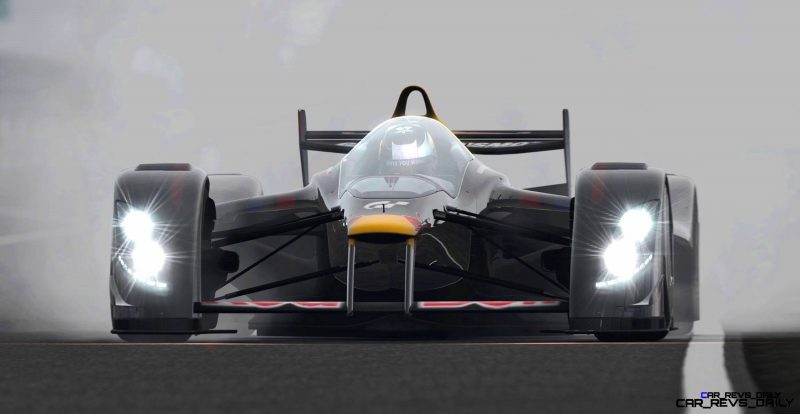
- Red Bull X2010 Prototype Full Reveal
-
- The “Red Bull X2010 S. Vettel” in Red Bull livery.
In a world where modern professional racing is restricted by regulations, the Red Bull X2010 Prototype is a machine born from a fantastic “what if” dream of Gran Turismo: “What would the fastest racing car on Earth, free of any and all regulations, look like?” And the only way to experience it is in Gran Turismo 5.
Initially the Red Bull X2010 Prototype was a single-seater canopied prototype wing car with covered front wheels. Powered by a 1500ps direct-injection V6 Twin Turbo, on paper the performance would have been spectacular, producing a top speed of 400km/h (248.6mp/h) and a maximum lateral acceleration of 6G. But once Red Bull Racing was brought on board to be a partner, the Red Bull X2010 Prototype really took off.
Adrian Newey, master aerodynamic engineer and Red Bull Racing’s chief technical officer, suggested “Fan Car” technology, a long-held dream of his, be added to the design of the Red Bull X2010 Prototype.
A “fan car” is a vehicle having a fan mechanism which forces the air out from underneath the car to reduce air pressure under the car’s floor. The resulting suction draws the car to the ground surface and creates a massive amount of downforce. And because it can create downforce regardless of the vehicle’s current speed, it dramatically raises it’s cornering speed capability even in low speed corners.
Fan cars are not new to the automotive world, and the technology has already been tested and proven. The Chaparral 2J fan car entered, first appearing in the 1970 Can-Nam series, was so fast that it was banned after just 1 season. Even in the F1, where tremendous speed is the name of the game, the BT46B fan car that was entered in 1978 by Brabham went on to dominate the race with extreme speed, only to be banned after its debut race.
Thanks to the insight of Mr. Newey, the Red Bull X2010 Prototype design was transformed. A large fan was added to the rear end of the body to implement the Fan Car technology. Plus, Newey provided additional input into the the design of the front and rear wings and rear diffuser, dramatically refining the vehicle’s aerodynamics. As a result, the virtual Red Bull X2010 Prototype was able to achieve an astonishing level of performance. Its new top speed was 450km/h (279.6mp/h), with a maximum lateral acceleration reaching up to 8.75G, pushing the vehicle to the very limits of what a normal human body can withstand. As a comparison, this is more Gs than a fighter pilot feels during full afterburner, and more than astronauts experience during a shuttle liftoff.
The driver who performed the shakedown test of the virtual machine inside Gran Turismo 5 was the world famous Sebastian Vettel. In his very first run on a virtual recreation of the Suzuka Circuit, he beat the record time for the course by over 20 seconds. And in the test drive on the Nurburgring GP Course, he marked a record time of 1 minute 4 seconds, drawing out the incredible potential of the Red Bull X2010 Prototype.
The dream of creating the fastest racing car ever has been realized thanks to the collaboration between Polyphony Digital and Red Bull Racing. Experience the power of the Red Bull X2010 Prototype in the “S. Vettel X Challenge,” part of Gran Turismo 5, the first driving lesson ever in Gran Turismo to be given by a top professional driver.
Adrian Newey, Chief Technical Officer at Red Bull Racing
“The results were thrilling. Red Bull X2010 Prototype is about evolution. Delivering the optimum combination of tested technologies in a single integrated design. This would be the future of racing were we not bound by regulations, but one that is achievable today. And as Sebastian has shown, it is about devastating speed coupled with real handling control. Today thanks to PlayStation®3 and Gran Turismo we can test drive the future.”
Kazunori Yamauchi, President, Polyphony Digital Inc and creator of the Gran Turismo series
“Red Bull X2010 Prototype sees the marriage of virtual and real worlds as we explore the boundaries of our technology and aesthetic senses. The Red Bull X2010 Prototype Project has been motivated by curiosity and passion, powerful forces that brought together the best the world has to offer in design, physics simulation, racing car product technology and driving.”
Car Name: Red Bull X2010 Prototype | Manufacturer: Gran Turismo | Year 2010 | All manufacturers, cars, names, brands and associated imagery featured are trademarks and/or copyrighted materials of their respective owners. All rights reserved. // Polyphony Digital Inc. / Sony Computer Entertainment Inc. // P-20120217-80044 // Usage for editorial use only // Please go to www.redbullcontentpool.com for further information. // Car Name: Red Bull X2010 Prototype | Manufacturer: Gran Turismo | Year: 2010 | “Generated in Game” All manufacturers, cars, names, brands and associated imagery featured are trademarks and/or copyrighted materials of their respective owners. All rights reserved. // Polyphony Digital Inc. / Sony Computer Entertainment Inc. // P-20120217-80416 // Usage for editorial use only // Please go to www.redbullcontentpool.com for further information. // Red Bull X2010 Prototype Downforce Specifications
Let’s try calculating the cornering G’s of the Red Bull X2010 Prototype at 300km/h from the total tire load and coefficient of friction for the tires.
The total load on the Red Bull X2010 Prototype’s tires at 300km/h is 1142.7kgf at the front tires, and 1432kgf at the rear tires. The coefficient of friction for the tires isμ=1.97. From these conditions, the maximum cornering force that the tires can exhibit can be determined to be 5073kgf. Dividing this by the wet weight of the Red Bull X2010 Prototype of 615kg comes to be 8.25, which is the maximum cornering G of the Red Bull X2010 Prototype.
8.25G greatly exceeds the G’s felt during the launch of the Space Shuttle, and is roughly the same as that of a jet fighter plane at full afterburner. It is a figure at the very limits of what a human body can withstand.
Test Calculation: Cornering G at 300km/h
Total Tire Load: 2575.6kgf (Front Wheel 1142.7kgf+Rear Wheel 1432.9kgf)
Coefficient of Friction of Tires: μ=1.97 (baseμ=2.16, model calculates an efficiency reduction to 91.5% under high load)
Cornering force that can be exhibited by tires: 5073.9kgf
Cornering G: 8.25G (= 5073.9kgf / 615kg)Red Bull X2010 Prototype Specifications Dimensions - Total Length: 4.75m
- Total Width: 2.18m
- Height: 0.98m
- Wheel Base: 2.9m
- Front Track Width: 1.85m
- Rear Track Width: 1.78m
Weight - Dry Weight: 545kg
- Wet Weight: 615kg
Engine - Type: V6 Twin Turbo (Direct Injection)
- Engine Displacement: 3000cc
- Maximum Output: 1106.0kw (1503.8ps) / 15000rpm *1483hp
- Maximum Torque: 714.1Nm (72.9kgf*m) / 12000rpm
Suspension Full Active Ride Suspension Downforce generated at the bottom due to the fan - Maximum Output 9800N, (1000kgf) equal to 1.63G
Downforce acting at vehicle speed squared due to the wings/Venturi Effect At 100km/h:
1044.7N, (106.6kgf) equal to 0.17GAt 200km/h:
4181.7N, (426.7kgf) equal to 0.69GAt 300km/h:
9412.9N, (960.5kgf) equal to 1.56GAt 400km/h:
16732.5N, (1707.4kgf) equal to 2.78GPerformance Data - 0-60mph: 1.4sec
- 0-120mph: 2.8sec
- 0-200mph: 6.1sec
- Maximum Speed: Over 280mph (450km/h+)
- Maximum Longitudinal or Lateral Acceleration at 300km/h: 8.25G
- The RED BULL trademark, the RED BULL & Device trademark and Double Bull Device are trademarks of Red Bull GmbH/Austria and used under license. Red Bull GmbH/Austria reserves all rights therein and unauthorized uses are prohibited.

Tom Burkart is the founder and managing editor of Car-Revs-Daily.com, an innovative and rapidly-expanding automotive news magazine.
He holds a Journalism JBA degree from the University of Wisconsin – Madison. Tom currently resides in Charleston, South Carolina with his two amazing dogs, Drake and Tank.
Mr. Burkart is available for all questions and concerns by email Tom(at)car-revs-daily.com.

